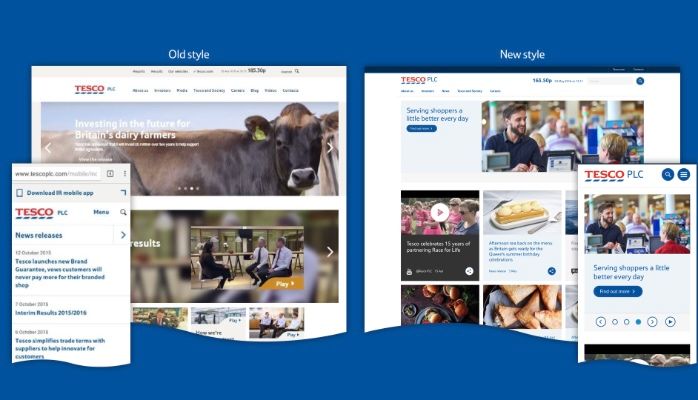December 13, 2017
Rent-seeking leadership
I’ve been thinking about value creation for the last week or so. I had beers with a friend and he made the crazily provocative statement that he felt like in his career there were only a couple of times where he felt that he was actually putting new value into the world, rather than just moving it around.
Hmm…
Read more...
leadership
pubtalk
August 7, 2017
Big design
When a company as large as Tesco creates digital products and services, they’re used by hundreds of thousands, even millions of people. As a brand we’re unashamedly mass market and aim to meet the needs and support the lives of the whole country. Designing for such a broad range of customers creates a fairly unique set of constraints and considerations on our product design teams including
- scalability
- usability
- desirability
- inclusivity.
Read more...
Design systems
design language
design strategy
inclusivity
July 24, 2017
Observations, explanations and confidence
We’re in the process of creating an alpha for the store locator on Tesco.com, and we’re getting pretty close to the point where we’re ready to move into beta. For the last couple of weeks we’ve been building a prototype in the browser that allows us to test the decisions we’ve been making about the UI and to make sure we’re reducing the risk around moving into beta and production code.
Early last week, the team watched our researcher take people through some familiar scenarios in the browser and used a simple framework to collaboratively capture observations and insights from each session. As customers worked with the different variations of the alpha, the team wrote down positive, neutral and negative observations along with emergent research questions on colour coded Post-its which after each session were talked through and grouped on the wall. As you’d imagine, this method drives out a lot of observations and we weren’t exactly short by the end of the two days.
Read more...
Testing
Confidence
Research
August 5, 2016
Why we do customer research
We’re used to using market research in Tesco, which is a powerful tool for building insight about large groups of customers or target markets. With our service design approach, we use customer research from the bottom-up and look closely at how representative customers interact with our existing or our possible products and services.
As a team, our purpose is to improve the way Tesco designs services, aiming for a joined-up and consistent customer experience. To be able to improve our products and services, we need to understand:
Read more...
Testing
Research
Market research
May 12, 2016
Making Tesco’s websites more helpful by design
 Before and after
Before and after
Customers using Tesco online probably aren’t aware that our digital estate includes over 100 different websites and dozens of apps. But they do notice when something blocks them from getting what they need. They’ve been telling us they often find it difficult to move between different Tesco sites, and struggle with having to do things differently on each different platform.
Read more...
Design systems
design language
March 14, 2016
Design Process - The DDL
We’re building Tesco’s Digital Design Language (the DDL) like a product, using iterative design to continually optimise the guidance on the toolkit.
This means that we’re open to hearing how the toolkit, which is where we publish the specification can be improved. DDL is a collaborative project with teams across Tesco participating in its creation. It’s not a case of ‘us’ setting guidelines and ‘them’ picking holes in it: we all work together to produce the best design language that works for the whole of Tesco. We bake this into the development of the guidelines by incorporating people across the business into the studio team, as well as having weekly critiques with the heads of design. We reinforce this by gathering feedback once we have guidelines we feel are ready to implement.
Read more...
Design systems
Design language
process
Find me on Mastodon
